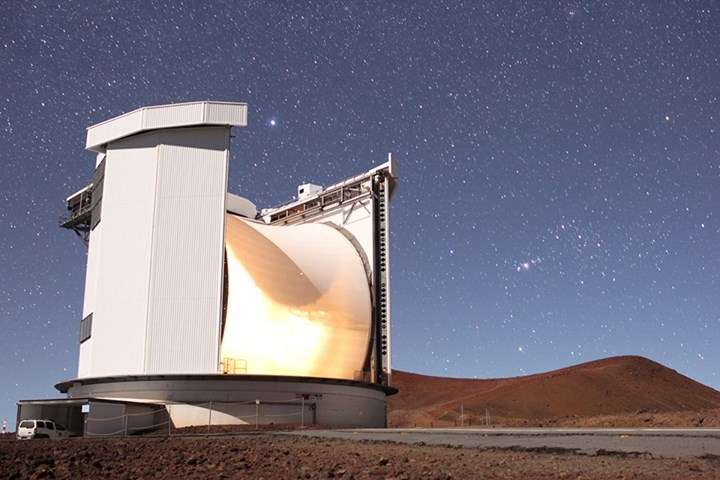A head start for planet formation? Evidence of large dust grains in star-forming regions

A group of Victoria-based scientists have made a discovery suggesting that the building blocks of planets may form earlier than previously thought. UVic astronomer, Mike Chen, presented the group's research at a Canadian Astronomical Society's conference on May 25th.
Molecular clouds, the coldest and densest collection of gas and dust in our galaxy, are the birthplaces of stars. As the gas and dust falls in on itself due to gravity, it creates a star surrounded by a disk known as the protoplanetary disk.
"Due to the conditions within the protoplanetary disk, dust grains in the disk are able to grow into large rocks and eventually into planets," says Chen. "What scientists didn't know before was whether the dust that becomes a planet could grow elsewhere before it falls onto the disk."
Many observations have shown that the dust grains inside protoplanetary disks are much larger than those found in the diffuse gas outside of molecular clouds. Very few measurements, however, have been made of the size of the dust grains in the regions surrounding the disks.
"What makes these measurements difficult is that they require observations of the light emitted by dust at multiple wavelengths, ranging from far-infrared to microwave," Says Chen. "To add to the challenge, measurements toward star-forming regions are only useful if they can cover large areas at sufficient resolutions."
Recent missions with the Herschel Space Observatory have provided incredible far-infrared maps of the nearby star-forming regions with unprecedented sensitivities and areal coverage. The Herschel data alone, however, are not sufficient to make the grain size measurements because they only cover the far-infrared wavelengths. To work around this problem, astronomers combined the Herschel data with microwave observations made by the James Clerk Maxwell Telescope (JCMT) located on Maunakea, Hawai'i. The JCMT is one of the high impact telescopes in which Canada has been heavily involved in the past two decades.
Chen and his collaborators were able to combine the Herschel and JCMT observations of the Perseus Molecular Cloud using a technique pioneered by Dr. Sarah Sadavoy (Max Planck Institutes, Heidelberg, Germany). They found that larger dust grains do exist in dense, star-forming gas outside of protoplanetary disks. Some of these grains are potentially centimeters in size.
"If these observed large grains are indeed produced outside of the protoplanetary disks and are able to fall onto these disks during star formation, then it may give planet formation a head start," says Chen. "In that case, one of the first steps towards building planets may be happening earlier than we previously believed."
Provided by Canadian Astronomical Society




















